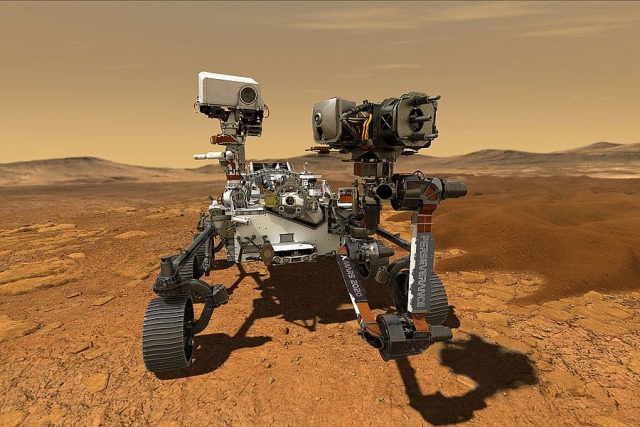According to the researchers, this information will help their colleagues-biochemists to find out which elements and chemicals got into the waters of Mars as a result of their interactions with hot rocks TASS, August 25.
The Perseverance rover has discovered deposits of volcanic rocks on Mars, frozen as a result of contact with water or interacting with it subsequently. The study of samples of these rocks collected by the rover on Earth will reveal the history of the depths of Mars, the press service of the University of California at Berkeley reported on Thursday.
"From the point of view of collecting rock samples on Mars, this discovery was a great gift for us. We have received the first evidence that volcanic rocks interacted with water. Their study will be extremely interesting for obtaining estimates of whether conditions existed on Mars for the origin and existence of life," said David Schuster, a professor at the University of California at Berkeley (USA), whose words are quoted by the press service of the university.
As noted by Schuster and his colleagues, these deposits were found in different regions of the Martian Jezero crater, which is presumably a hollow of an ancient dried-up lake. During the first year of operation, the Perseverance rover found many confirmations of this, including several deposits of clay and other sedimentary rocks formed only in the presence of liquid water.
Fragments of many of these deposits were not only studied using scientific instruments aboard NASA's fifth rover, but also collected in a special container that will be returned to Earth in the first half of 2030 as part of the MSR mission. Some of them have already brought several interesting and important discoveries.
For example, scientists found at once in four regions of the delta of a dried-up river that flowed into the Jezero crater, multilayer deposits of volcanic magma that solidified as a result of contact with water or actively interacted with it after solidification. The study of these rock samples will help scientists accurately date the age of the crater, as well as reveal the chemical composition of Martian reservoirs that came into contact with similar rocks.
According to the researchers, this information will help their colleagues-biochemists to find out which elements and chemicals got into the waters of Mars as a result of their interactions with hot rocks. Understanding this is critically important for assessing whether molybdenum and other trace elements necessary for the work of the most important enzymes of living cells were present on Mars.
The first plans for the creation of the Perseverance rover were announced by NASA in December 2012. The fifth NASA rover, which is a close analogue of its predecessor, the Curiosity rover, was launched into space at the end of July 2020, in February 2021 it successfully landed on Mars. After that, Perseverance successfully launched the first aircraft, the Ingenuity helicopter, into the atmosphere of Mars and began exploring the planet, including searching for possible traces of life.
It is planned that Perseverance will not only study the properties of sedimentary rock deposits, but also collect their samples in a special cabinet installed on board. The stored minerals will be returned to Earth by a special joint mission of the European Space Agency (ESA) and NASA called MSR, which will be sent to the red planet no earlier than 2026.

